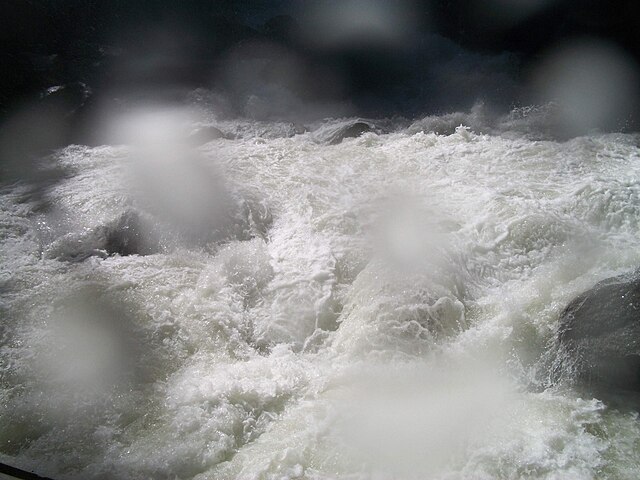International scale of river difficulty
The international scale of river difficulty is an American system used to rate the difficulty of navigating a stretch of river, or a single rapid. The scale was created by the American Whitewater Association to evaluate rivers throughout the world, hence international in the title.
It should not be confused with the internationally used whitewater scale, which is published and adapted by a committee of the International Canoe Federation (ICF).
The grade reflects the technical difficulty and skill level required associated with the section of river. The scale is of use to various water sports and activities, such as rafting, riverboarding, whitewater canoeing, stand up paddle surfing, and whitewater kayaking.
Class III rapid at Canolfan Tryweryn, Wales.
Image: Black Fork Mohican River
Image: Madawaska River Whitney
Image: Watauga The Big Hole
Whitewater forms in the context of rapids, in particular, when a river's gradient changes enough to generate so much turbulence that air is trapped within the water. This forms an unstable current that froths, making the water appear opaque and white.
Whitewater on the river Guil (French Alps)
Whitewater on the small rapid of Kannonkoski, Central Finland
Vivid water of the Torne River between Sweden and Finland.
Whitewater at Yosemite








